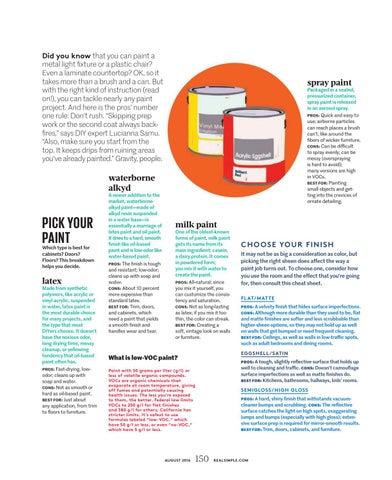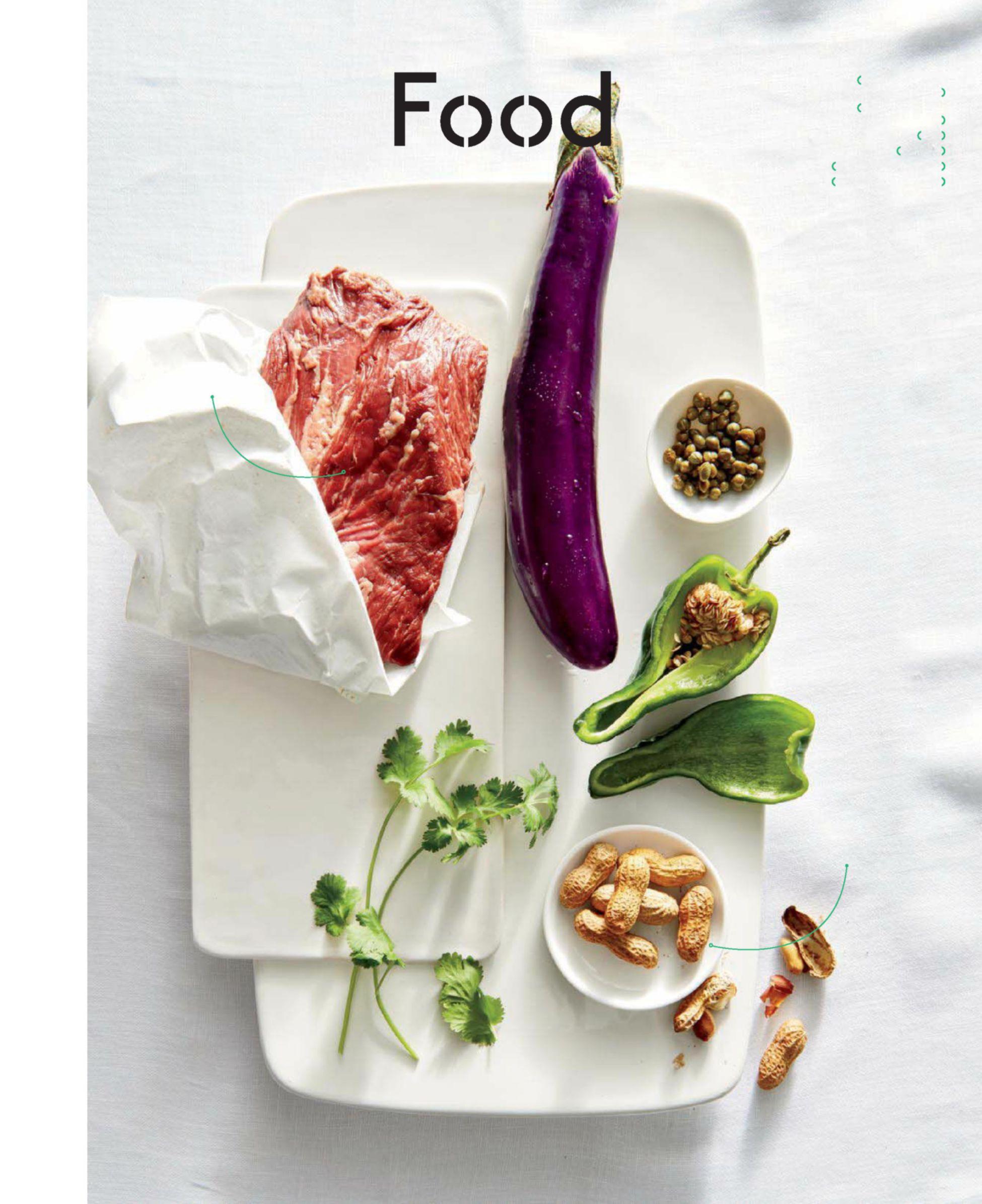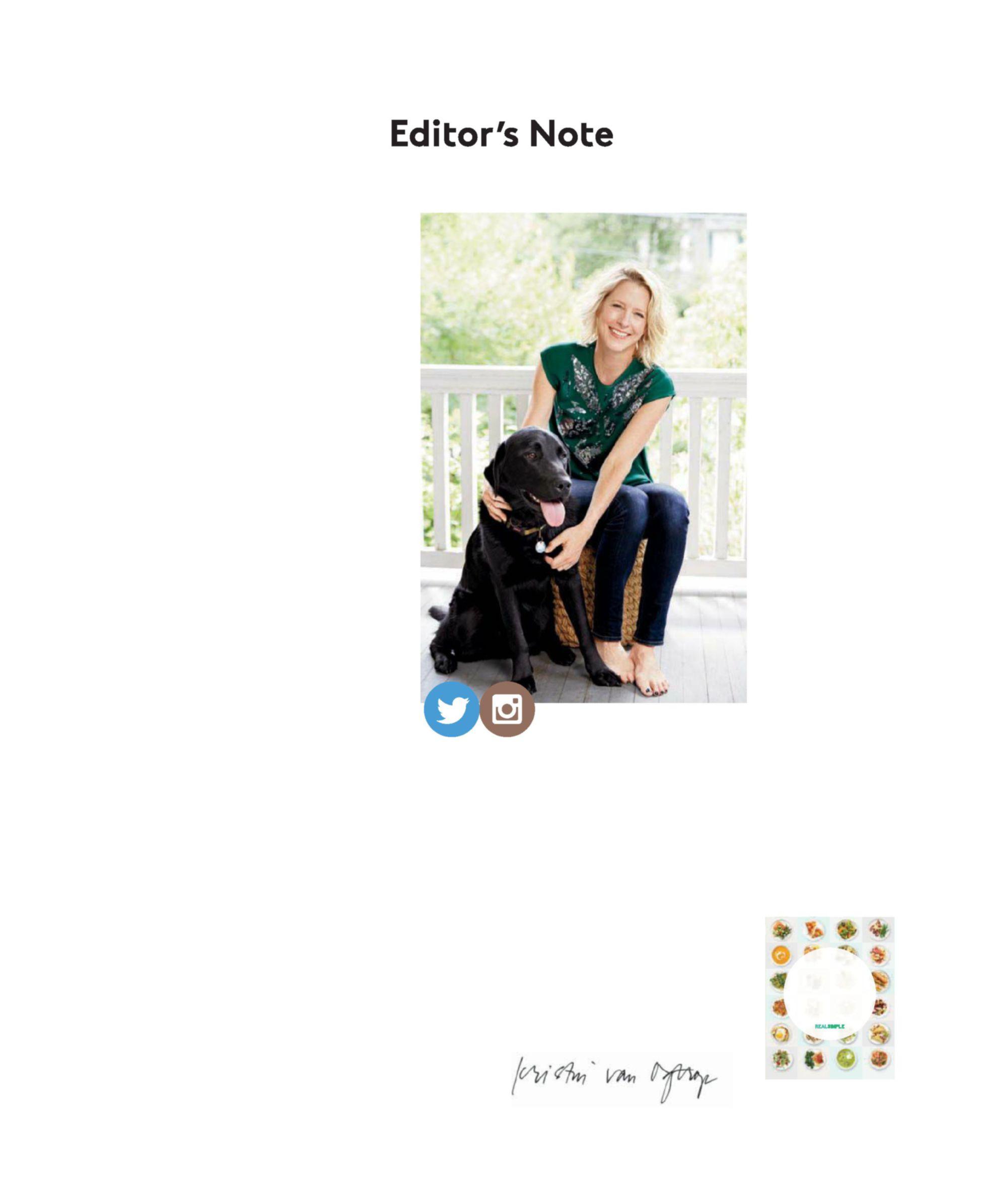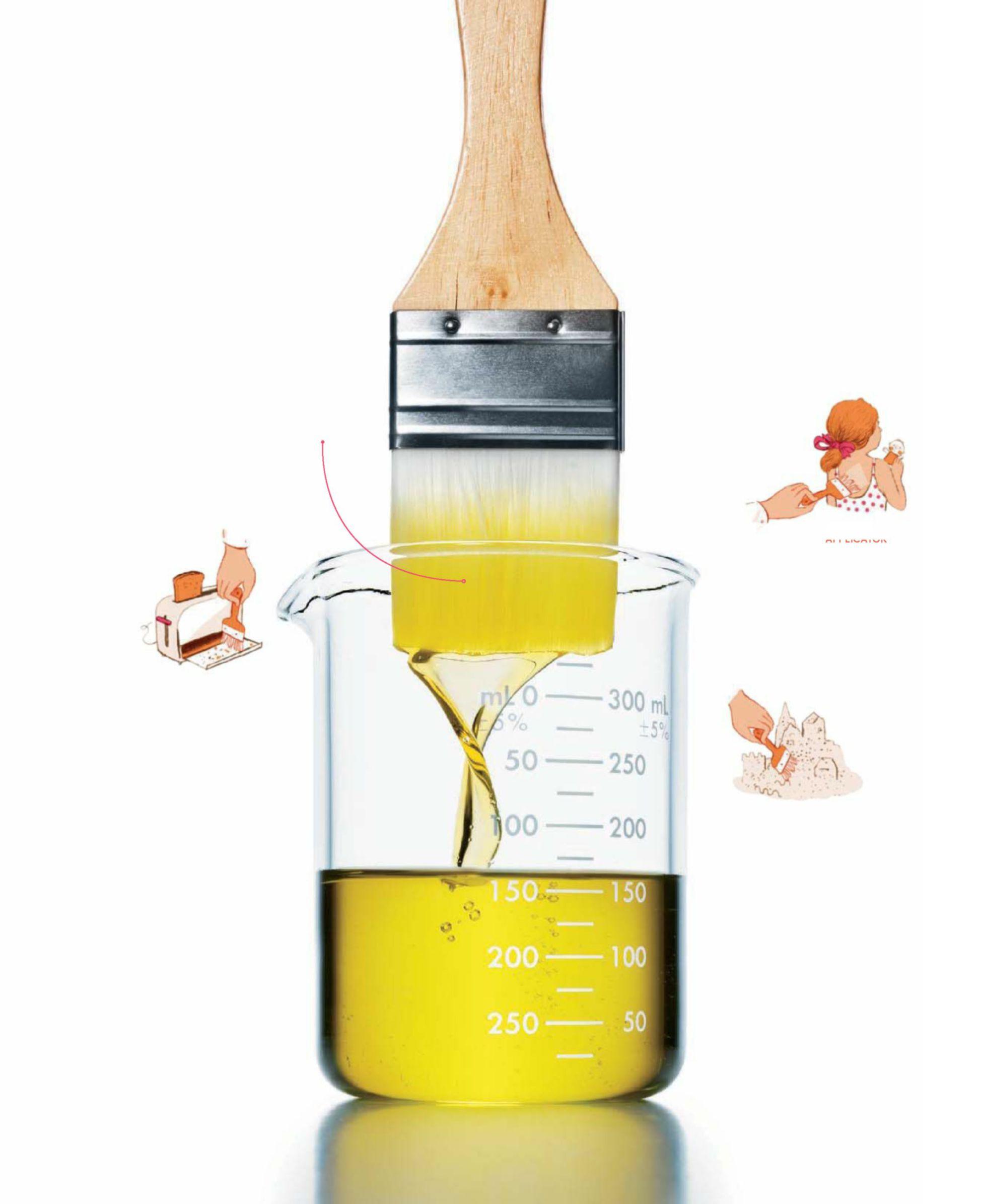Did you know that you can paint a metal light fixture or a plastic chair? Even a laminate countertop? OK, so it takes more than a brush and a can. But with the right kind of instruction (read on!), you can tackle nearly any paint project. And here is the pros’ number one rule: Don’t rush. “Skipping prep work or the second coat always backfires,” says DIY expert Lucianna Samu. “Also, make sure you start from the top. It keeps drips from ruining areas you’ve already painted.” Gravity, people.
spray paint Packaged in a sealed, pressurized container, spray paint is released in an aerosol spray. PROS: Quick and easy to use; airborne particles can reach places a brush can’t, like around the fibers of wicker furniture. CONS: Can be difficult to spray evenly; can be messy (overspraying is hard to avoid); many versions are high in VOCs. BEST FOR: Painting small objects and getting into the crevices of ornate detailing.
waterborne alkyd
PICK YOUR PAINT
Which type is best for cabinets? Doors? Floors? This breakdown helps you decide.
latex Made from synthetic polymers, like acrylic or vinyl-acrylic, suspended in water, latex paint is the most durable choice for many projects, and the type that most DIYers choose. It doesn’t have the noxious odor, long drying time, messy cleanup, or yellowing tendency that oil-based paint often has. PROS: Fast-drying, low-
odor; cleans up with soap and water. CONS: Not as smooth or hard as oil-based paint. BEST FOR: Just about any application, from trim to floors to furniture.
A newer addition to the market, waterbornealkyd paint—made of alkyd resin suspended in a water base—is essentially a marriage of latex paint and oil paint. It dries to a hard, smooth finish like oil-based paint and is low-odor like water-based paint. PROS: The finish is tough and resistant; low-odor; cleans up with soap and water. CONS: About 10 percent more expensive than standard latex. BEST FOR: Trim, doors, and cabinets, which need a paint that yields a smooth finish and handles wear and tear.
milk paint One of the oldest-known forms of paint, milk paint gets its name from its main ingredient: casein, a dairy protein. It comes in powdered form; you mix it with water to create the paint. PROS: All-natural; since you mix it yourself, you can customize the consistency and saturation. CONS: Not as long-lasting as latex; if you mix it too thin, the color can streak. BEST FOR: Creating a soft, vintage look on walls or furniture.
It may not be as big a consideration as color, but picking the right sheen does affect the way a paint job turns out. To choose one, consider how you use the room and the effect that you’re going for, then consult this cheat sheet. FL AT/ MAT TE PROS: A velvety finish that hides surface imperfections. CONS: Although more durable than they used to be, flat and matte finishes are softer and less scrubbable than higher-sheen options, so they may not hold up as well on walls that get bumped or need frequent cleaning. BEST FOR: Ceilings, as well as walls in low-traffic spots, such as adult bedrooms and dining rooms.
EG GSHELL / SATIN
What is low-VOC paint?
PROS: A tough, slightly reflective surface that holds up well to cleaning and traffic. CONS: Doesn’t camouflage surface imperfections as well as matte finishes do. BEST FOR: Kitchens, bathrooms, hallways, kids’ rooms.
Paint with 50 grams per liter (g/l) or less of volatile organic compounds. VOCs are organic chemicals that evaporate at room temperature, giving off fumes and potentially causing health issues. The less you’re exposed to them, the better. Federal law limits VOCs to 250 g/l for flat finishes and 380 g/l for others; California has stricter limits. It’s safest to use formulas labeled “low-VOC,” which have 50 g/l or less, or even “no-VOC,” which have 5 g/l or less.
AUGUST 2016
C H O O S E YO U R F I N I S H
SEMIGLOSS / HIGH GLOSS PROS: A hard, shiny finish that withstands vacuumcleaner bumps and scrubbing. CONS: The reflective surface catches the light on high spots, exaggerating lumps and bumps (especially with high gloss); extensive surface prep is required for mirror-smooth results. BEST FOR: Trim, doors, cabinets, and furniture.
150
REALSIMPLE.COM



















